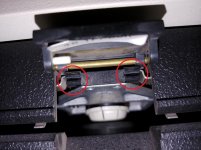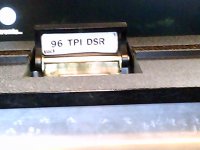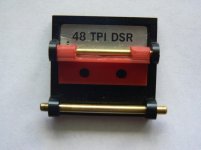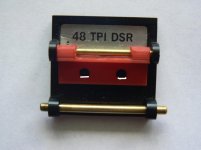Fractal Fischer
Member
Hi all,
I'm quickly finding out with my recent repair attempts on an IBM 5150 that the plastic holding the front latches on Tandon floppy drives is evidently about as brittle as the Dead Sea scrolls.
The PC's been sitting untouched in a dark air-conditioned closet the past 30 years, and even so the latching mechanism on one of the floppy drives more or less disintegrated on the first or second use. I bought a replacement Tandon TM-100 that looked to be in good condition, and almost instantly the plastic latch shattered and failed in the exact same way as the first:

I ordered a yet another replacement just a moment ago (you can never have too many spare parts, right?), but before I even so much as breathe on it I want to figure out if there's anything I can do to prevent a repeat of the last two breakages. I've had good results restoring light plastics with the retro-brite solution but I'm sure it'd be a pretty bad idea to use a bleaching agent on a black bezel. Any suggestions or should I just go ahead and get the super glue ready?
I'm quickly finding out with my recent repair attempts on an IBM 5150 that the plastic holding the front latches on Tandon floppy drives is evidently about as brittle as the Dead Sea scrolls.
The PC's been sitting untouched in a dark air-conditioned closet the past 30 years, and even so the latching mechanism on one of the floppy drives more or less disintegrated on the first or second use. I bought a replacement Tandon TM-100 that looked to be in good condition, and almost instantly the plastic latch shattered and failed in the exact same way as the first:

I ordered a yet another replacement just a moment ago (you can never have too many spare parts, right?), but before I even so much as breathe on it I want to figure out if there's anything I can do to prevent a repeat of the last two breakages. I've had good results restoring light plastics with the retro-brite solution but I'm sure it'd be a pretty bad idea to use a bleaching agent on a black bezel. Any suggestions or should I just go ahead and get the super glue ready?




